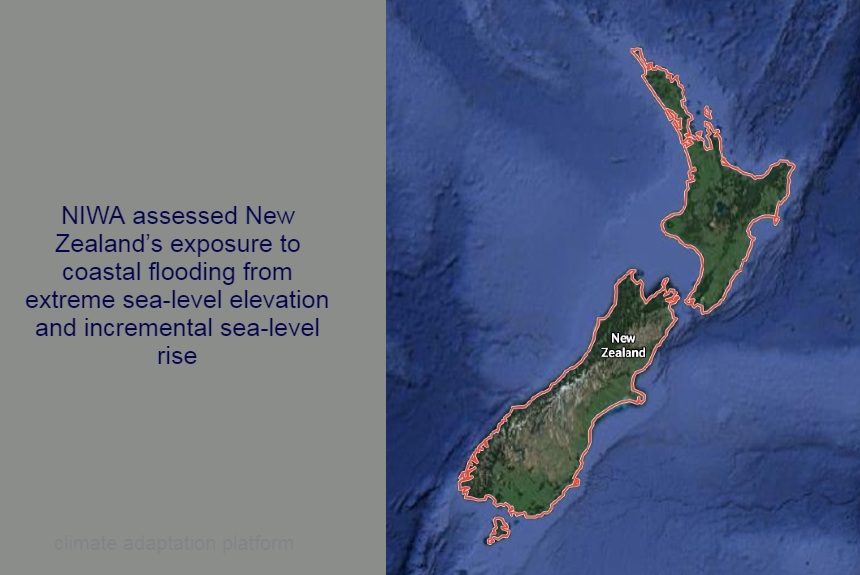As sea level rises, coastal flooding threatens New Zealand’s low-lying coastal land, exposing its residents and assets.
The National Institute of Water and Atmospheric Research (NIWA) conducted a study on this subject for the Deep South Challenge.
The report presents the following:
- The report presents New Zealand’s exposure to a 1% annual exceedance probability (AEP) from extreme sea level elevation (ESL1) at present-day mean sea level (MSL) around the country’s coastline, resulting from a combination of tide, storm surge, mean sea-level anomaly, and wave setup.
- AEP refers to the probability of a flooding event occurring in any year, expressed as a percentage. In this report, 1% AEP refers to a coastal flooding event with a 1% chance of occurring in any one year.
- On land with high-resolution airborne light detection and ranging (LIDAR) digital elevation models (DEM) available, coastal flooding is shown at many increments of up to +3m above present-day mean sea-level rise. On land without a high-resolution DEM but with lower resolution satellite-derived (DEM), coastal flooding is mapped for +3m above present-day mean sea-level rise.
They assessed New Zealand’s exposure to coastal flooding from extreme sea-level elevation and incremental sea-level rise using a two-step process:
- First, it maps the land exposed to coastal inundation from 1% AEP extreme sea levels and those of gradual sea-level rise increments.
- Second, it identifies and enumerates populations, built assets, and land cover exposed to coastal flooding at present-day mean sea level (MSL) and future higher sea levels and at national, regional, and territory levels using coastal maps, graphs, and tables.
NIWA’s report provides comprehensive data on New Zealand’s exposure to coastal flooding from extreme sea-level elevations and various increments of sea-level rise.
They created coastal maps using available satellite and airborne digital elevation models, identifying areas, populations, and assets such as buildings, transport networks, electricity grids, and three-water infrastructures that are exposed to and at risk from coastal inundation.
This report will help researchers and practitioners locate high-risk areas that need continued focus and investigation due to climate change.
The study also recommends updating coastal inundation maps and information as new LIDAR data becomes available.
Read the entire report by clicking the link in the “Source” below.
Source:
Paulik, R., Stephens, S., Wadhwa, S. et al. (2019, March). Coastal Flooding Exposure Under Future Sea-level Rise for New Zealand. National Institute of Water and Atmospheric Research. The Deep South Challenge. Retrieved from https://deepsouthchallenge.co.nz/wp-content/uploads/2021/01/Exposure-to-Coastal-Flooding-Final-Report.pdf
PHOTO CREDIT: Google Maps



Leave a Reply